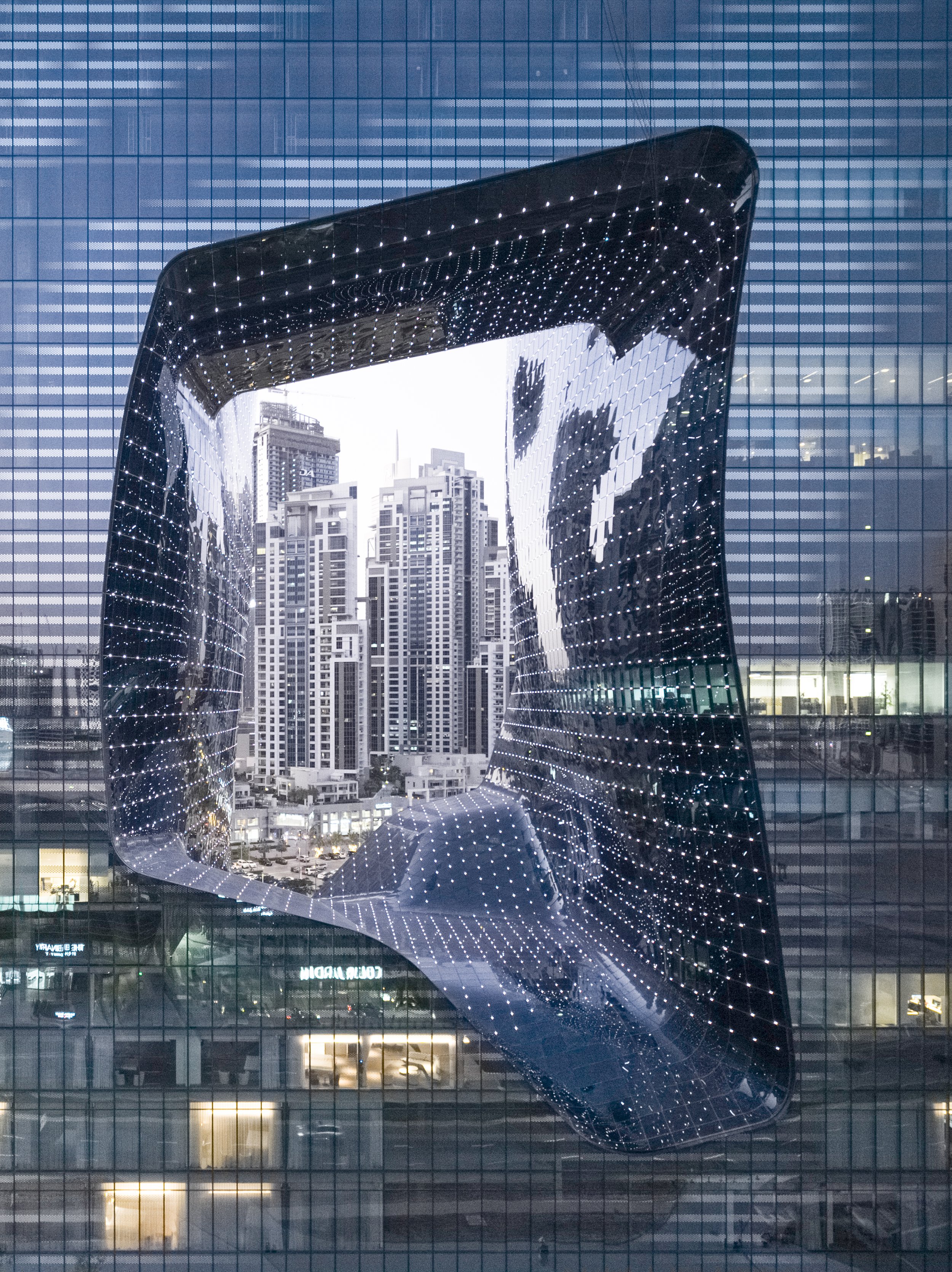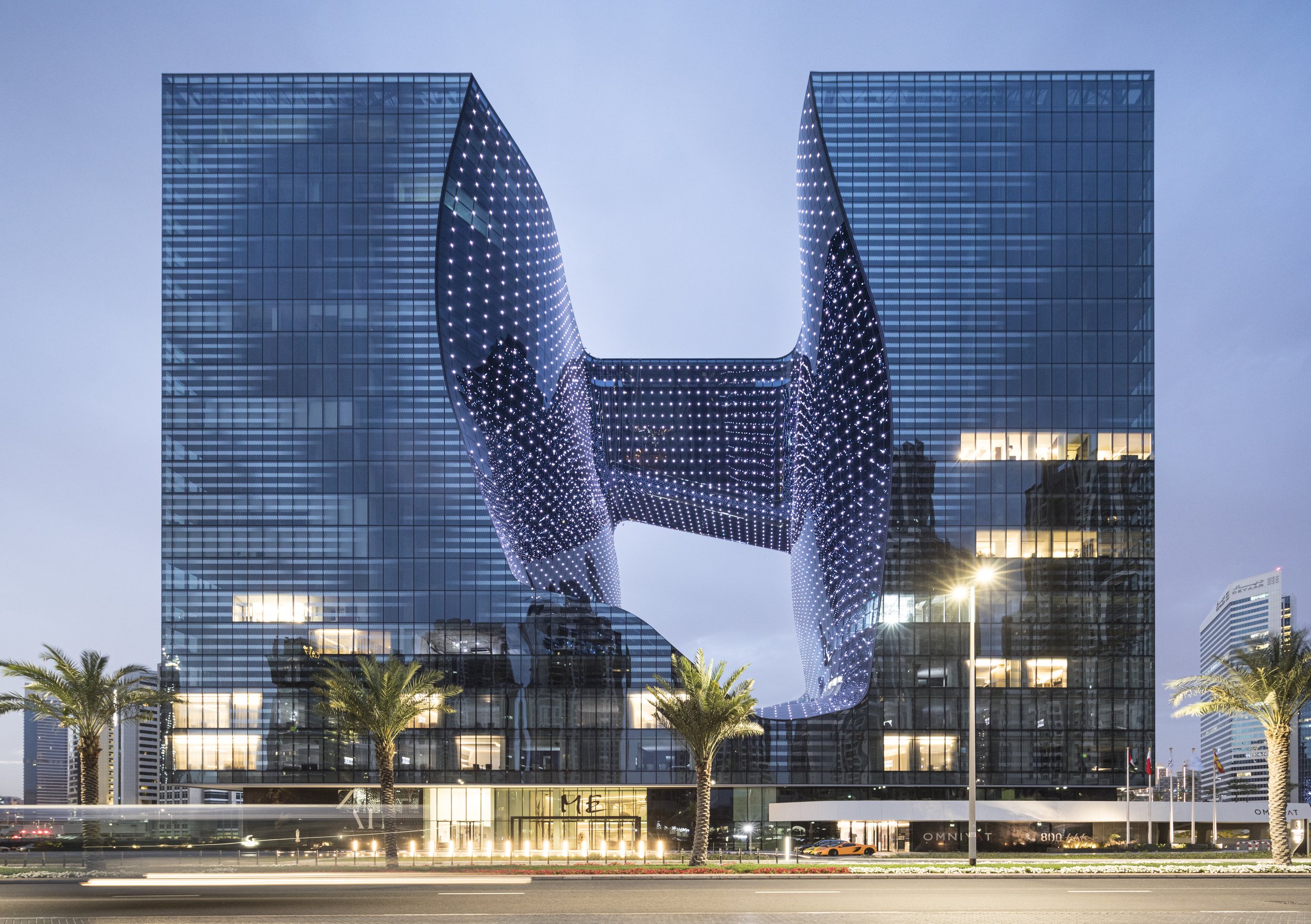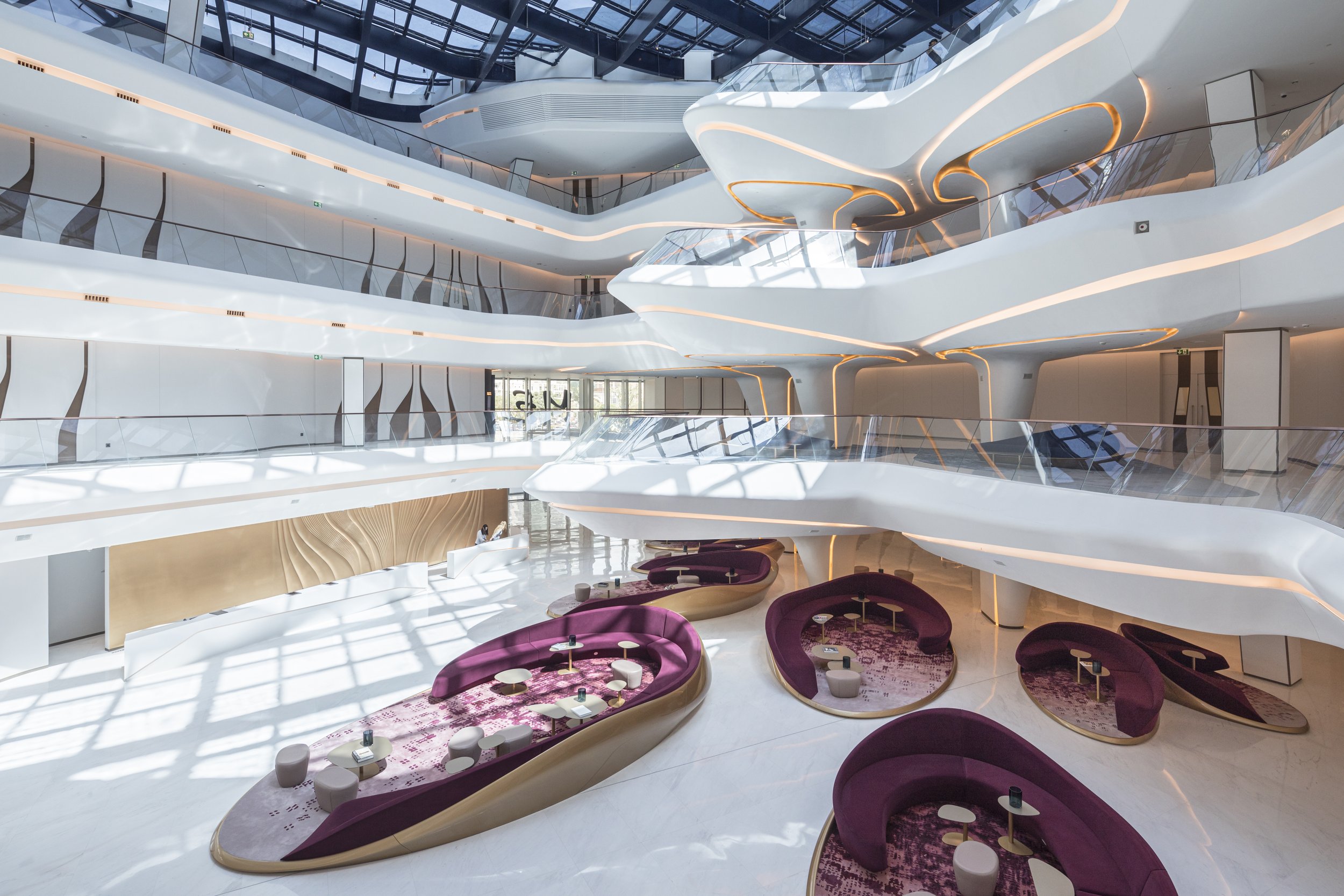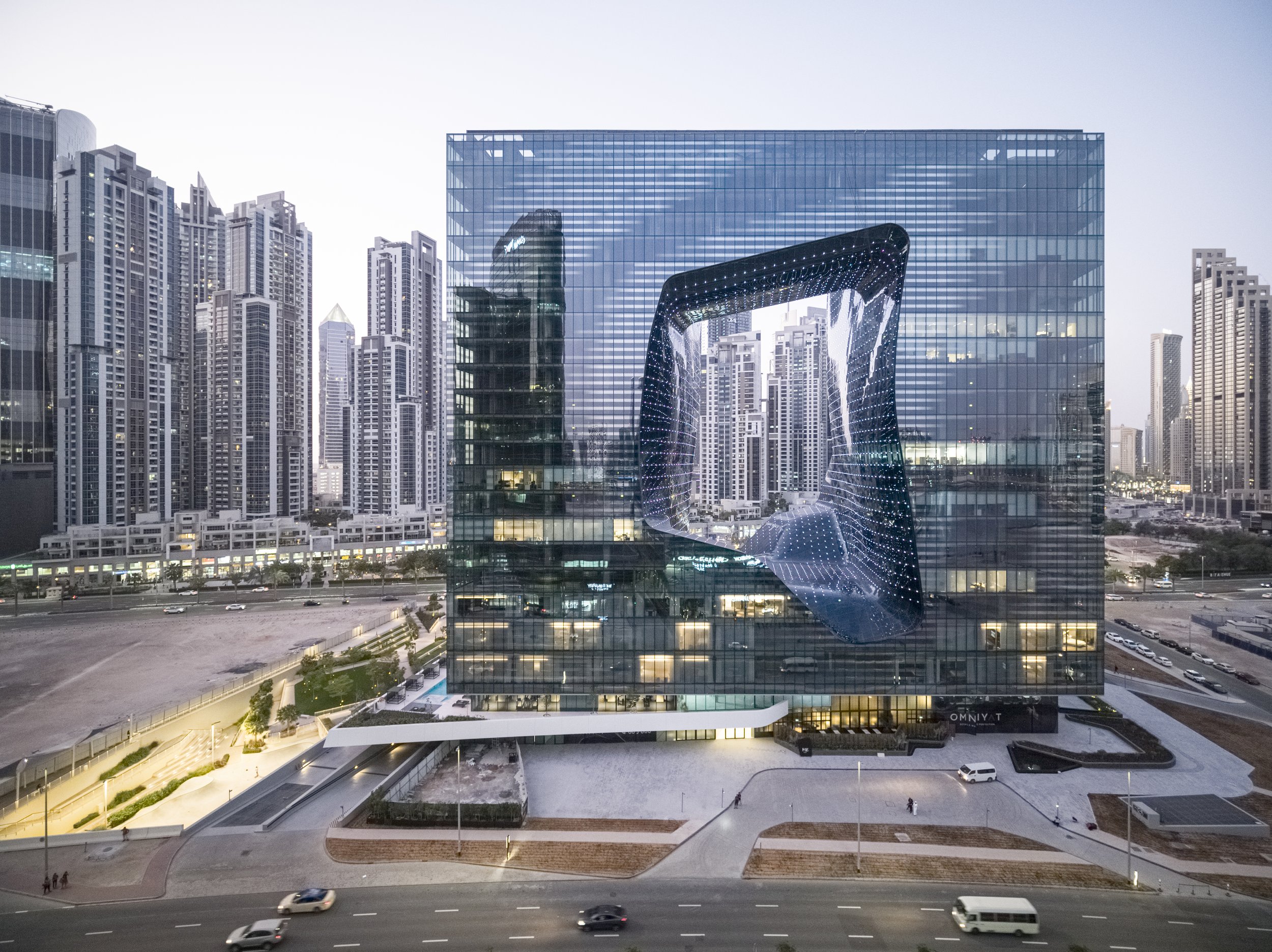Architecture: The Opus
The Opus’ Void. ©Laurian Ghinitoiu
Photography by Laurian Ghinitoiu
Photo Editing and Text by Ari Adams
Envisaged by the late Dame Zaha Hadid in 2007, The Opus was completed posthumously in 2019. Located in the Burj Khalifa District of Dubai, The Opus comprises two separate towers that connect into a singular whole. Home to the luxury ME Dubai hotel, the Opus’ structure examines the tension between the conceptual architectural uses of positive and negative spaces, transparency and opacity.
Noted for its unique and fluid design, the building uses a mix of extreme curvature within the void—for which Zaha Hadid is remembered as an innovator in the modern architectural landscape—and more conventional, sharp right angles on the exterior that come together to create a cube-like shape that feels both highly industrial yet totally organic. Finding a balance between a modern and futuristic appearance, the reflective façade of the Opus emphasizes the surrounding architecture of the Burj Khalifa District while mimicking the beauty of the sun and sky during the day. Meanwhile, during the dark hours of the night, the Opus’ void is illuminated by a series of LED panels that accentuate the building’s exceptional design.
The Opus’ Façade. ©Laurian Ghinitoiu
The 84,345 square meter building contains a total of twenty-seven floors—twenty above ground stories and seven below. Across those floors, the hotel integrates seventy-four rooms and nineteen suites as well as 56,000 square feet of office space, twelve restaurants and a rooftop bar. The interior of the space is also unique in its design as it is the only of Zaha Hadid’s hotels that features her design work in both the architecture and interior design. Not only does the ground floor atrium of the hotel feature Hadid’s signature curvature, but the Dame’s designs are also featured in furniture throughout the building, notably the bed and bathroom components that are available to customers at the hotel.
The Opus’ Interior. ©Laurian Ghinitoiu
An Iraqi-British architect, Dame Zaha Hadid passed away in 2016. Remembered for being one of the foremost and influential modern architects, Hadid gave architecture a “whole new expressive identity”, according to the New York Times. Hadid was the first woman to win the Pritzker Prize, which she received in 2004 and also received the Stirling Prize—the UK’s most prestigious architectural award— in 2010 and 2011. She is remembered for designing buildings like the Guangzhou Opera House in 2010, the London Aquatics Center in 2011, and the Heydar Aliyev Center in 2013, which also received criticism due to Aliyev’s—the former dictator of Azerbaijan—authoritarian human-rights record. Despite these criticisms, Hadid’s work always pushed the envelope of what could be done in regards to creating beautiful, modernist and futurist architecture.
The Opus’ Façade. ©Laurian Ghinitoiu
The Opus represents one of only a handful of Hadid’s designs that has been completed posthumously but it also represents a life’s work of boundary breaking architecture and interior design. As one of her firm’s four projects shortlisted for the 2019 World Architecture Festival Awards and the winner of Architzer’s 2021 A+ Awards in the hospitality category, the Opus has proved itself to be amongst the many of Hadid’s gifts to not only the world of architecture but the worlds of art and design.











